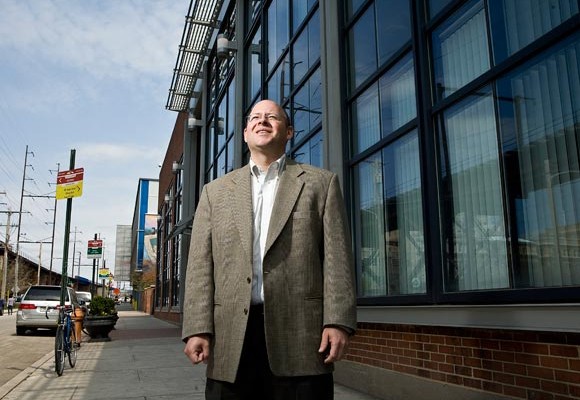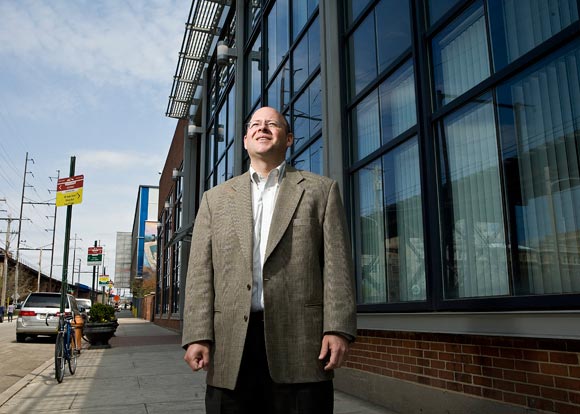 Osage Partners recently raised $100 million for a new fund, Osage University Partners. Through this fund, the family of venture capital and private equity funds has partnered with eight universities, including the University of Pennsylvania, to co-invest in start-ups created from technology licensed from these universities. This is only one of many examples in the Philadelphia region of how investors, universities, research institutions, and other stakeholders are taking new approaches and a sharper focus to the 30-plus year tradition of formally transferring technologies out of universities.
Osage Partners recently raised $100 million for a new fund, Osage University Partners. Through this fund, the family of venture capital and private equity funds has partnered with eight universities, including the University of Pennsylvania, to co-invest in start-ups created from technology licensed from these universities. This is only one of many examples in the Philadelphia region of how investors, universities, research institutions, and other stakeholders are taking new approaches and a sharper focus to the 30-plus year tradition of formally transferring technologies out of universities.
Generally when universities license their technology to start-ups, they receive a right to participate in future financing rounds. However, universities hardly ever take advantage of this so-called “preemptive right.” Through the partnership with Osage, universities can exercise this right to participate as co-investors in future funding rounds, sharing in the profit of the fund. 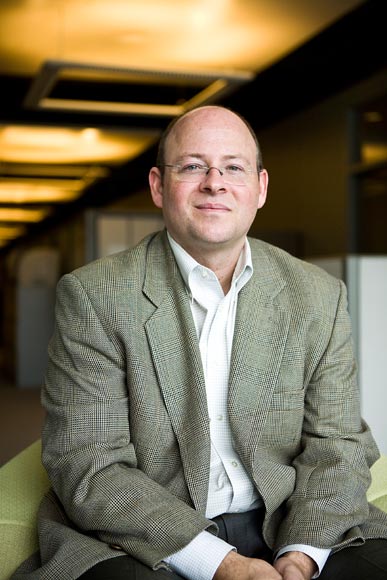 Osage, which declined to be interviewed for this story, isn’t the only group that sees the value of investing and supporting the development of university-based technologies. When Stephen Nappi joined Temple University in 2008 as their director of technology transfer operations he noticed that the Philadelphia region as a whole was committed to the development of university-based technologies. Then when Temple hired a new vice provost of research and graduate education last May, it solidified the commitment of top university leadership to commercialization.
Osage, which declined to be interviewed for this story, isn’t the only group that sees the value of investing and supporting the development of university-based technologies. When Stephen Nappi joined Temple University in 2008 as their director of technology transfer operations he noticed that the Philadelphia region as a whole was committed to the development of university-based technologies. Then when Temple hired a new vice provost of research and graduate education last May, it solidified the commitment of top university leadership to commercialization.
One of the ways Nappi thought they could augment their existing process was by working with regional partners to create an “expert-guided approach” in advancing technologies. Among others, Temple partners with BioStrategy Partners, the University City Science Center, the Nanotechnology Institute, and the Energy Commercialization Institute.
Nappi said, “The focus for us is to make sure that we are effectively integrated with these (regional) programs. I think you are seeing a shift of being able to set up effective proof of concept programs to help technology development efforts.”
From Upstarts to Startups
The University of Pennsylvania is doing just that. They wanted to make the tech transfer process more user-friendly, so last May, they created UPSTART, an innovative program that provides a one-stop shop for Penn faculty to form a start-up company in direct collaboration with the university.
When asked what was different about this program, Dr. John Swartley, deputy executive director of the Center for Technology Transfer responded, “We are now a true partner with start-ups coming out of the university.” He also added that he thought “tech transfer may be a bit of an archaic term very soon” and that the focus is more and more on technology development.  When Drexel University’s new president John Fry took over last year, he too made it clear that he wanted to make commercialization a priority. To do so, he has committed more resources to the Office of Technology Commercialization that will allow them to double their staff and increase resources to pursue patents and intellectual property.
When Drexel University’s new president John Fry took over last year, he too made it clear that he wanted to make commercialization a priority. To do so, he has committed more resources to the Office of Technology Commercialization that will allow them to double their staff and increase resources to pursue patents and intellectual property.
Dr. Robert McGrath, executive director & associate vice provost of Drexel’s Office of Technology Commercialization is very excited about this proposition. He said that Drexel is now focusing on spinning out and commercializing small companies that can go after Small Business Innovation Research (SBIR) and Small Business Technology Transfer (STTR) funding. He thinks that this development effort and additional funding can help get their companies get to the point where other investors or partners will see the potential of the technology.
Real Regional Partnerships
This is where regional partners such as BioStrategy Partners (BSP) and the University City Science Center’s QED program come in. They work with the universities and their researchers to guide them further down the commercialization path.
BSP developed their Commercialization Germinator program to help tech transfer offices and researchers understand the importance of developing a commercialization pathway. Through this program, BSP serves as a partner to coach researchers and provide market guidance.
According to Dr. Karen Hanson, executive director of BSP, the program’s approach is to keep the technology in house at the university as long as possible because once a company is formed “the corporate side must develop along with scientific side or science languishes.” 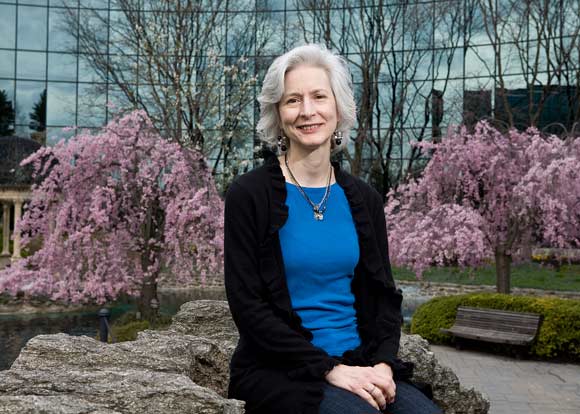 Helping to advance university-based technologies once they are a bit further along, the Science Center’s QED program provides support to academic technology development efforts, with the ultimate goal of commercializing the product.
Helping to advance university-based technologies once they are a bit further along, the Science Center’s QED program provides support to academic technology development efforts, with the ultimate goal of commercializing the product.
This program, which was launched as a pilot, has now gone through three rounds and is currently working with 18 regional universities. Although QED has only funded nine projects, they have engaged vast numbers of scientists, university administrators, investors who participate on the selection team, and industry representatives who serve as business advisors. According to Dr. Christopher Laing, VP of science and technology at the Science Center, “education and outreach to these groups is a huge part of what we do.” Out of the nine project projects funded by QED, three start-ups have been formed and one has licensed their technology to an existing company. 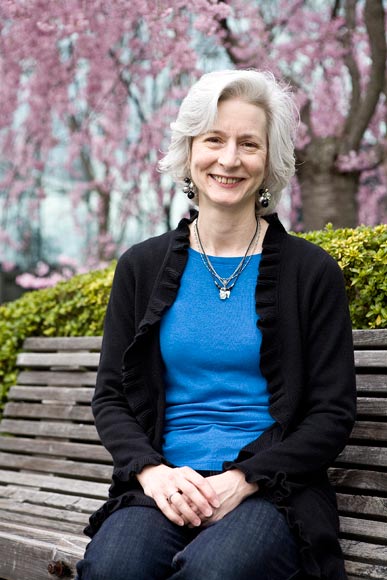 How a Leukemia Therapy is Being Developed Right Now
How a Leukemia Therapy is Being Developed Right Now
As an example of how all of this works together to support the regional innovation economy, Temple-based researcher Dr. George Tuszynski received guidance from BSP through the Commercialization Germinator program. As part of the program, BSP convened a panel to guide Dr. Tuszynski in the development of a protein-based therapy for acute myeloid leukemia. In January, Dr. Tuszynski received funding from the QED program and was paired with business advisor Deni Zodda. This newly-formed team is once again working with BSP through their Double Helix program, which is providing commercial support to bring the technology to market.
Why is this all so important? Nappi of Temple notes that it is critical to show researchers there is a real commitment by the university and community to provide resources to help with technology development.
McGrath of Drexel points to a national trend of companies, specifically those in the life sciences, becoming more and more risk adverse. To balance this, he thinks that universities and other regional partners must play a larger role in moving technologies further down the development continuum.
Amber Van Niekerk is a freelance writer based in Havertown. Send feedback here.
Photos:
John Swartley in front of the Transitional Research Lab, one of many facilities at Penn where faculty investigators perform ground-breaking research, some of which becomes the technological basis for start-up companies such as those spun out of the UPSTART program.
John Swartley, Deputy Executive Director of the Penn UPSTART program
One of UPSTART’s awards for excellence
Karen Hanson, Ph.D. Executive Director of BioStrategy Partners
Hanson on the Salus University Campus-Elkins Park
All photographs by MICHAEL PERSICO
